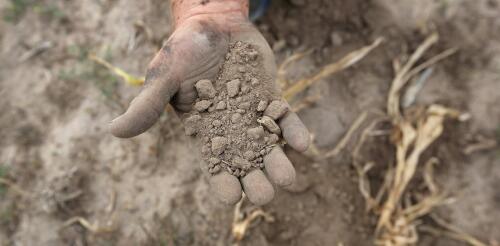Climate change
E-commerce may make shopping more convenient, but it has a dark side that most consumers never see. Say you order an electric toothbrush and two shirts for yourself during a sale on Amazon. You unpack your order and discover that the electric toothbrush won’t charge and only one shirt fits you. So, you decide to return the unwanted shirt and the electric toothbrush. Returns like this might seem simple, and often they’re free for the consumer. But managing those returns can get costly for retailers, so much so that many returned items are simply thrown out. In 2022, returns cost retailers about US$816 billion in lost sales. That’s nearly as much as the U.S. spent on public schools and almost twice the cost of returns in 2020. The return process, with transportation and packaging, also generated about 24 million metric tons of planet-warming carbon dioxide emissions in 2022. Together, costs and emissions create a sustainability problem for retailers and the p...
Humans rely on the ocean for many things, including food, jobs, recreation and stabilization of Earth’s climate. But although ocean resources may seem infinite, human impacts like pollution, overfishing and climate change are creating what United Nations Secretary-General António Guterres has called an “ocean emergency.” Climate change is pushing ocean temperatures to record levels, many fisheries are overharvested, and plastic waste is accumulating in the deep sea. These five articles from The Conversation’s archive spotlight urgent challenges for ocean conservation, and describe what researchers are doing to devise effective responses. 1. A devastating invasion is expanding Invasive lionfish are aggressive predators, native to the Indo-Pacific Ocean, that feed on smaller reef fish. They have caused heavy damage in the Caribbean and Gulf of Mexico since they first appeared in the Atlantic in 1985. Now, they’ve spread south to Brazil, which ha...
As the eastern U.S. and Canada reeled from days of thick wildfire smoke in early June 2023, millions of people faced the reality of climate change for the first time. Shocking images of New York under apocalyptic orange skies left many people glued to air quality indices and wondering whether it was safe to go outside. What they might not realize is that the air many of them breathe isn’t healthy even when wildfire smoke isn’t filling the sky. In fact, the air that 99% of the world’s population breathes is not safe, according to the World Health Organization. Air pollution is everywhere, in cities and in the countryside, visible and invisible. It kills an estimated 7 million to 10 million people a year, taking 2.2 years off global average life expectancy. Worldwide, that’s a combined 17 billion life years. There is growing evidence that even low levels of air pollutants damage the human body, increasing the risk of cardiovascular and respiratory illness...
This year, the United Nations International Court of Justice (ICJ) — the world’s highest court — is hearing its first argument about climate commitments. In an effort to make sure countries and corporations follow existing laws and agreements relating to climate change and environmental protection, groups have started pushing for legal action at the international scale. Research shows that the current climate agreements won’t stave off the worst harms of climate change — and many countries are failing to meet their own commitments. A number of activist groups, mostly from developing nations already facing the realities of a changing climate, are taking a new legal approach to climate action. They are arguing that climate change cases are human rights cases and in doing so are wading into unprecedented legal waters. In this episode of The Conversation Weekly, we speak with three scholars about current legal cases tying climate change and human rig...
Flash droughts develop fast, and when they hit at the wrong time, they can devastate a region’s agriculture. They’re also becoming increasingly common as the planet warms. In a new study published May 25, 2023, we found that the risk of flash droughts, which can develop in the span of a few weeks, is on pace to rise in every major agriculture region around the world in the coming decades. In North America and Europe, cropland that had a 32% annual chance of a flash drought a few years ago could have as much as a 53% annual chance of a flash drought by the final decades of this century. The result would put food production, energy and water supplies under increasing pressure. The cost of damage will also rise. A flash drought in the Dakotas and Montana in 2017 caused US$2.6 billion in agricultural damage in the U.S. alone. Stunted corn in Nebraska struggles to grow during the 2012 flash drought that covered much of the cent...




